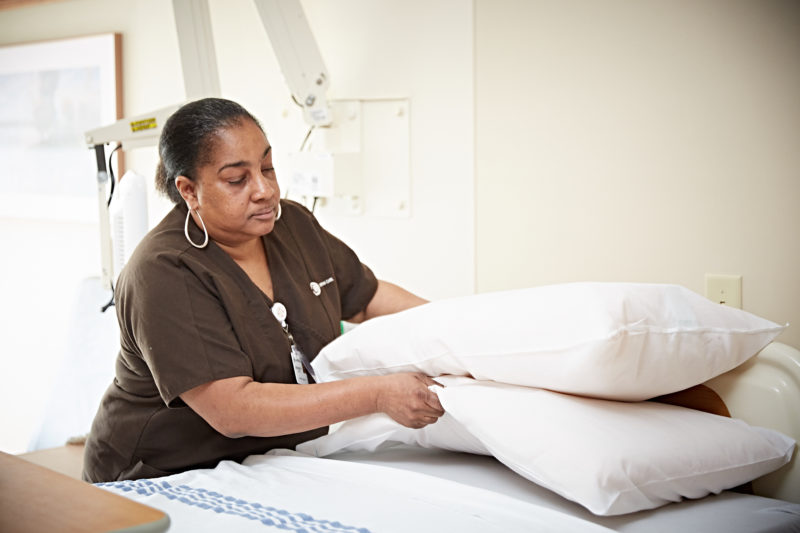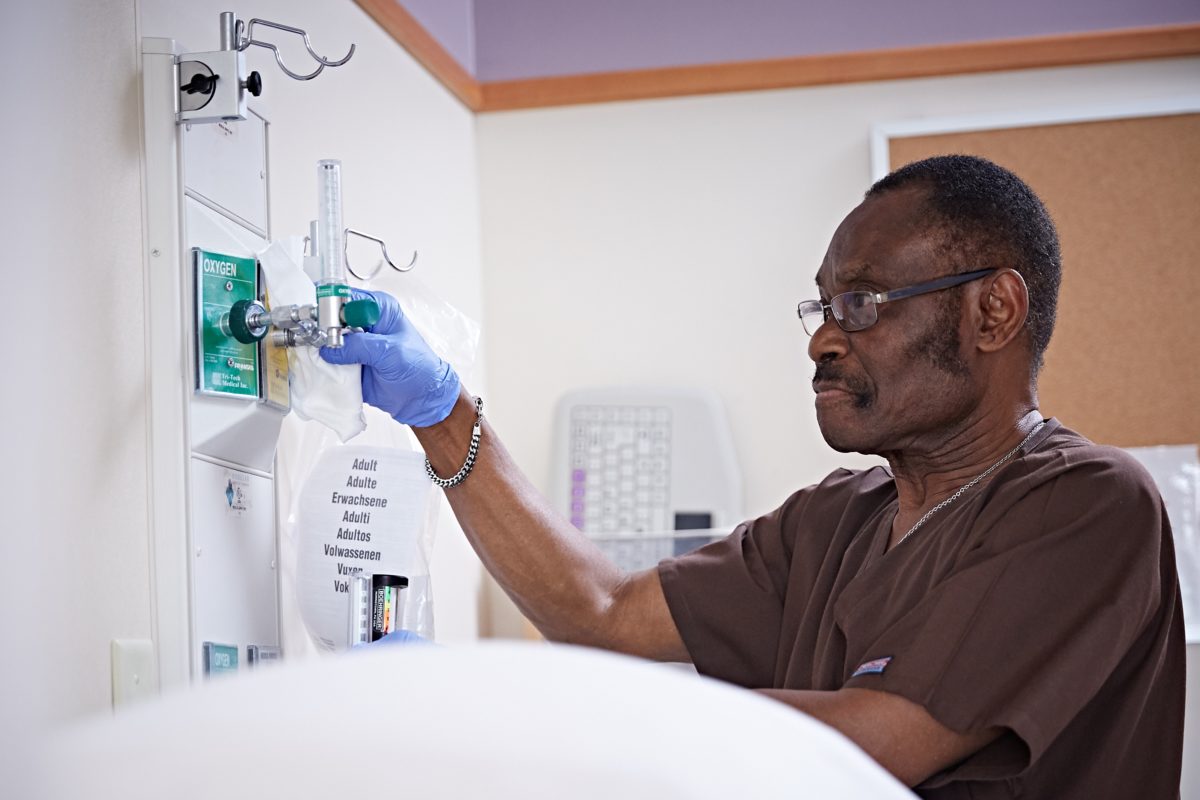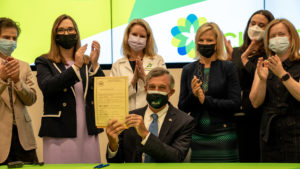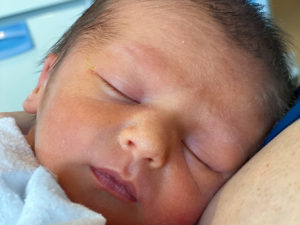As soon as a patient is discharged from the hospital, an Environmental Services team swings into action, making certain the room is clean and safe for the next patient.
“The Environmental Services staff are our partners in both patient flow and patient safety,” said Linda Laskowski Jones, MS, APRN, ACNS-BC, FAAN, vice president, Emergency & Trauma Services. “They do far more than help to get beds ready. They play a critical role in reducing infections, including hospital-acquired infections.”
With Christiana Hospital operating at peak capacity, the Environmental Services team is responsible for turning over up to 225 rooms a day, said Jason Funyak, director, Environmental Services and Patient Escort. At Wilmington Hospital, the teams are turning over nearly 75 rooms a day.
Environmental Services recently launched a more advanced electronic protocol designed to rapidly alert the housekeeping staff that a room requires cleaning.
“When a patient escort is contacted to transport a patient from a room, they communicate through their iPhone,” Funyak explained. “That will alert the closest person in housekeeping to clean that vacant room.”
Making certain there are enough staffers to get the job done is an essential part of the strategy, said Bob Mulrooney, vice president, Facilities and Services.
“When we get to the late afternoon and early evening on high-volume days, we need to ensure that there is adequate staff to handle that busy time, which often requires making alternative shift arrangements,” Mulrooney said. “Getting a room ready is critical for a patient who is waiting for a place to get more comfortable and to alleviate capacity issues in the Emergency Department.”
After the housekeeping staff arrives, it should take about 30 minutes for the room to be thoroughly cleaned. The plan of action is precise and efficient, Funyak said: “Strip the bed. Remove the trash. Dust high and low. Sanitize all horizontal surfaces with a bleach wipe. Spot-clean vertical surfaces, such as walls. Clean the bathroom. Dust the floor. Put new linens on the bed. Wet-mop the floor.”

If the patient who vacated the room suffered from an infectious disease, the process is more intense, requiring 45 minutes. The curtains are removed. Walls are scrubbed with a disinfectant. In certain circumstances the room is treated with ultraviolet light, which kills pathogens lurking on surfaces.
Checks and balances are in place to ensure that standards are being met, including periodic tests. One such test involves dabbing a fluorescent marking gel on high-touch areas, such as sinks, doorknobs and call buttons. By shining a black light on areas marked with the gel, the staff can determine if the surface has been thoroughly cleaned.
Christiana Care’s Environmental Services staff provide a critical foundation of patient safety and infection prevention. Team-building and recognition are important elements of supporting their success. To show appreciation to Environmental Services workers, the department hosts breakfasts and luncheons for team members, and staff are frequently rewarded with tickets that can be redeemed for meals, as well as spot bonuses for workers who receive kudos from the staff and patients for a job well done.
“We had one employee who got so many kudos she was able to buy herself a set of pots and pans,” Funyak said. “Our hope is whenever she uses those pots and pans to cook for her family it’s a reminder of how much we appreciate the wonderful job she does for our patients.”



